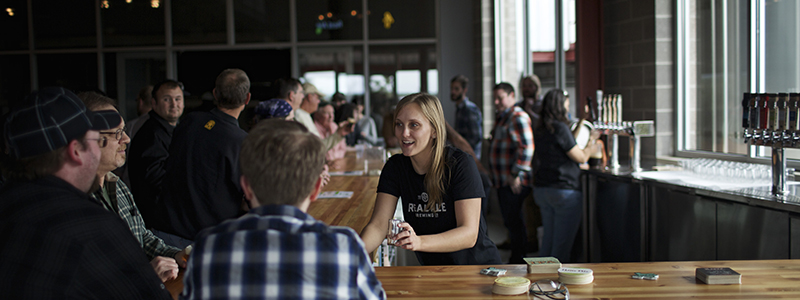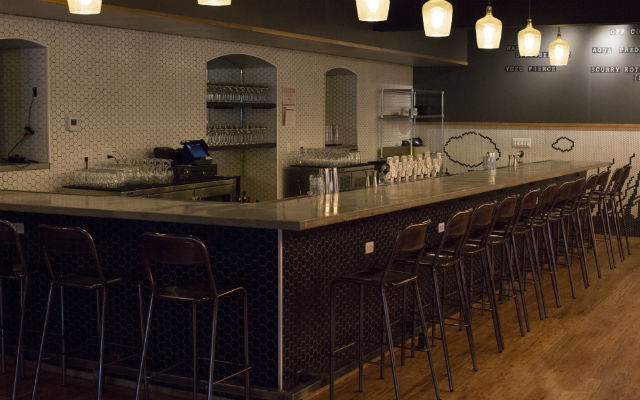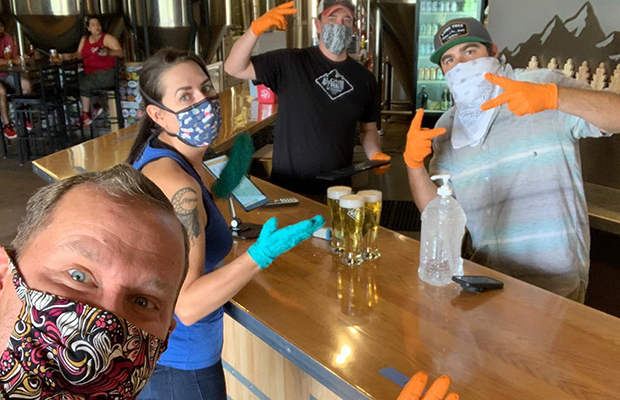
Stepping into the tangled web of supply chain management is a newer venture for many smaller breweries. What it takes to package a brew seems simple enough: fill a container with beer, put it in a box and ship it out. But the intricacies are myriad.
As the craft beer industry matures, the management side of new projects and supply get more complex, which means a strong business mind will be needed to get things done in order, on time and within (or under) budget.
Keeping track of not just bottles and kegs anymore, the rise of buying growlers for taprooms and cans for consumers have become prevalent as well.
Real Ale Brewing in Blanco, Texas has been able to reorganize its supply chain needs after a rebranding effort in 2014. It timed out nicely for the 20-year-old brewery as Ross Nearburg moved up from working in the packaging hall to taking over the company’s Planner/Buyer position at that time. It gave him a chance to set timelines for all projects, from mother boxes, carriers, printed cans and other packaging.
He said that vendors are much more accommodating to breweries that come in with a plan and know what they want.
“Not a lot of them are willing to educate you on how to be a good supply chain manager and I don’t feel many breweries are hiring supply chain people,” he said, noting that his education over two years in the position has included working with CFO Chad Stoner and personal learning on the job. “When you give [vendors] all the things they need to do their job and you know how they are going to react to them, they are much more receptive to helping you out in the future because you are helping them.
“Suppliers are more responsive to a brewery’s ability to act like a business instead of just flying by the seat of their pants.”
Sixpoint Brewing’s Director of Operations, Vinnie Cruz feels that working with certain suppliers has no specific formula but there are some major factors that need to be taken into consideration: Quality, customer service, innovation and competitive pricing.
Pricing is what it usually comes down to if the others are in line, Cruz said.
“Competitive pricing helps us keep COGS (Cost of Goods Sold) down which enables us to reinvest back into the company,” he said. “In the long run this also benefits our partners.”

Real Ale has helped solve one of its problems if a quality issue arises, as it did a few years ago in not just cans, but with carriers. Dual sourcing helped Nearburg at the start and is now standard practice as the brewery doesn’t contract to any one vendor for product, opting instead to work with a main vendor and keep tabs on a few others should problems arise, or to price compare. Nearburg said he regularly has three bids (and has bid on up to seven vendors) out on any new project, be it cans or packaging.
“This helps us challenge our current understanding of capability, pricing, supply chain, and everything else,” he said. “In most cases, our current vendors are able to match or beat the capabilities of their competitors, but this is not always the case. When this occurs, I will bring in the new vendor for that particular project and see if they might deserve a larger portion of the business. Only in an extreme scenario could I imagine switching vendors entirely. That would require a consistent and probably deliberate failure to meet the standards mentioned earlier.”
When it came to a purchasing decision to maximize brand impact, Sixpoint chose a look that is fairly different, using 12-ounce sleek-styled cans instead of a more traditional look. It has meant some cost difference with the style and machinery set up, but Cruz says the brewery can justify it through the cans becoming a staple of its branding.
“As craft beer grows it’s getting harder to stand out, and easier to seem gimmicky rather than innovative,” he said.
Keeping proper stock can be an issue as well. Setting ordering and delivery times through vendors, working with a packaging or warehouse broker or having warehouse space can all be options when dealing with bottle or can orders.
Sixpoint has its vendors hold can and wrap inventory for up to 90 days so it can pull only what it will need on monthly purchase orders. Its vendor will hold the remainder of the stock for the next month’s production needs.
At Real Ale, it combines timing with on-hand space. Nearburg says he tries to keep the minimum on hand to avoid space issues, but with so many brands in the Real Ale portfolio with different sales rates, it can be tricky for their printed cans.
“Now that cans have gone to such an incredibly difficult ordering process, I think most minimums are damn near a whole truck now,” he said. “So getting smaller moving brands on cans has been challenging.”
For breweries with space constraints that may be new into distribution and can’t afford a vendor to hold extra product, a few options to look at could be paying a packaging broker that can warehouse and source products; a warehousing company to hold extra things for a fee; or dedicating a bay or lot near a brewery’s dock as a drop trailer spot.
Although timing is tricky, knowing lead times for each vendor item helps keep the process flowing. That and lots of spreadsheets, Nearburg said with a laugh.
He has a 2-3 month plan, but usually the 60,000-barrel brewery can order two weeks out with the vendor they spot order from.
The risk, Nearburg noted, was that buying on spot means the price can fluctuate. Even though suppliers may not work on a contract, prices can be negotiated for the year, which can help save money. Staying on top of the prices and having two or three sources to price off of can help alleviate some of that concern.
“If you aren’t tracking the price actively as a buyer then your prices could get out of control and you could be paying a dollar more for everything than you did a year ago,” Nearburg said. “Staying dual sourced helps with keeping vendors honest. If one vendor’s price goes up and the other’s doesn’t, you can see what’s going on. It gives you a gut check that we like to be able to have to see if we have the best sourcing decision.”
Timing the ordering pattern for kegs can come down to which way the wind is blowing. Quite literally. Heading into summer, can be when it becomes the most important to be stocked up and ready to ship. Sixpoint runs biannual audits on its keg fleet early in the year and orders in mid-Spring to be ensured lead time to get cooperage in time for the hotter weather and more product that is needed to be in on-premise sites.
Keeping track of those kegs can be a nightmare, as any brewery has learned.
“Once they are in the market there is very little we can do on our end to track their whereabouts,” said Real Ale head brewer Brent “Schmitty” Sapstead. “The responsibility of monitoring the float in the market falls more to our distributor and would include gathering and returning empty keg shells, tracking keg shell deposits, and managing draft inventory/quality at accounts.”




2 Trackbacks / Pingbacks